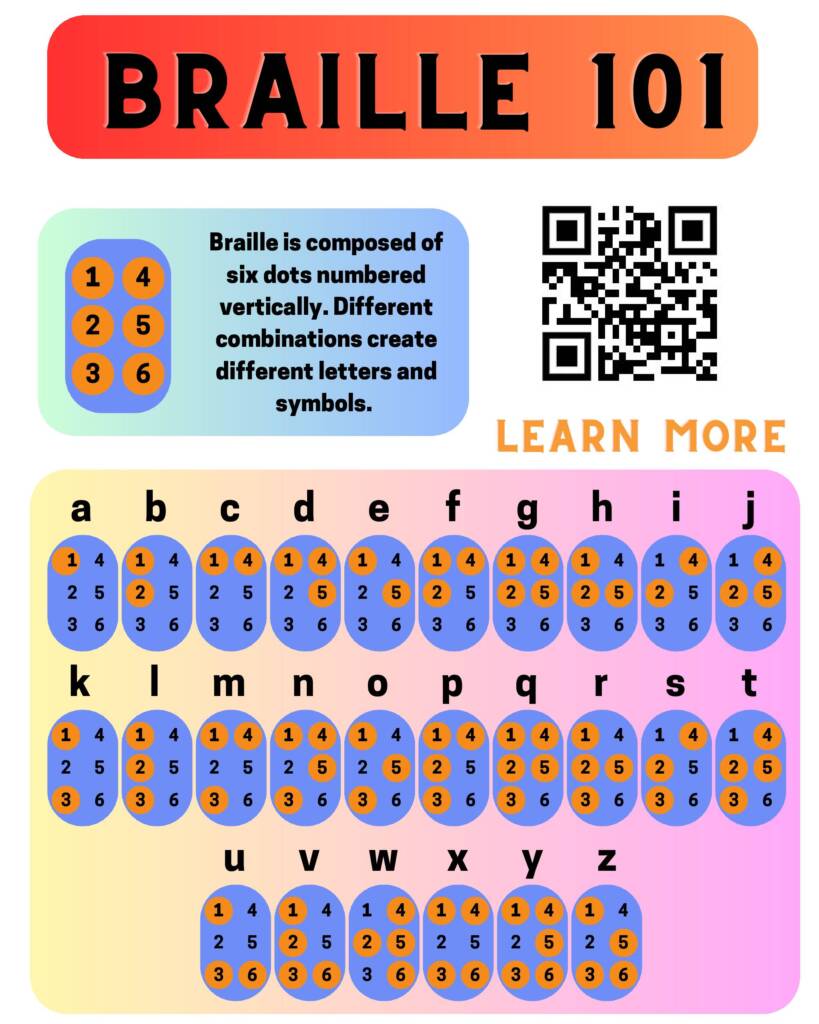Orientation and Mobility refers to the field of instruction designed to teach individuals who are blind or visually impaired to travel safely and efficiently from one location to another.
While Certified Orientation and Mobility Specialists (COMS) and Teachers of the Visually Impaired (TVIs) have different training and different roles in the education of students with visual impairments, there are many ways in which the two disciplines overlap. O&M specialists often do not view themselves as teaching literacy, but there are, in fact, many opportunities to practice literacy skills during O & M lessons. Here are a few ideas and we hope you’ll share some of the things you’ve tried!
- Concept development for young children who are blind or visually impaired, including those who are deafblind or who have multiple disabilities
- Directionality and spatial orientation: up/down, back/front, above/below, in front of/behind, in/out, left/right
- Auditory skills, such as listening and auditory discrimination (identifying sounds, locating sound sources)
- Map skills
- Directions: asking for, giving, reading, writing
- Recognizing signs, numbers, addresses
- Keeping a journal of routes
- Researching routes
Paths to Literacy does not attempt to provide exhaustive information about O & M, but we do share ideas for activities, as well as blog posts, resources, and technology. As always, we invite you to share your ideas!
Activity Ideas to Incorporate Literacy into O&M
- Labeling the Environment in an Accessible Format
- Location Literacy: The art of knowing, defining, and communicating where you are, where you want to go, and how to get there
- O & M Literacy: Creating a Tactile-Map
- O & M Literacy: “Routes” Journals
- O&M Literacy: “Pairs” Game
Additional Resources
For more information about Orientation and Mobility, see also:
- Orientation and Mobility Instructional Resources (TSBVI)
- Orientation and Mobility Skills (Vision Aware)



